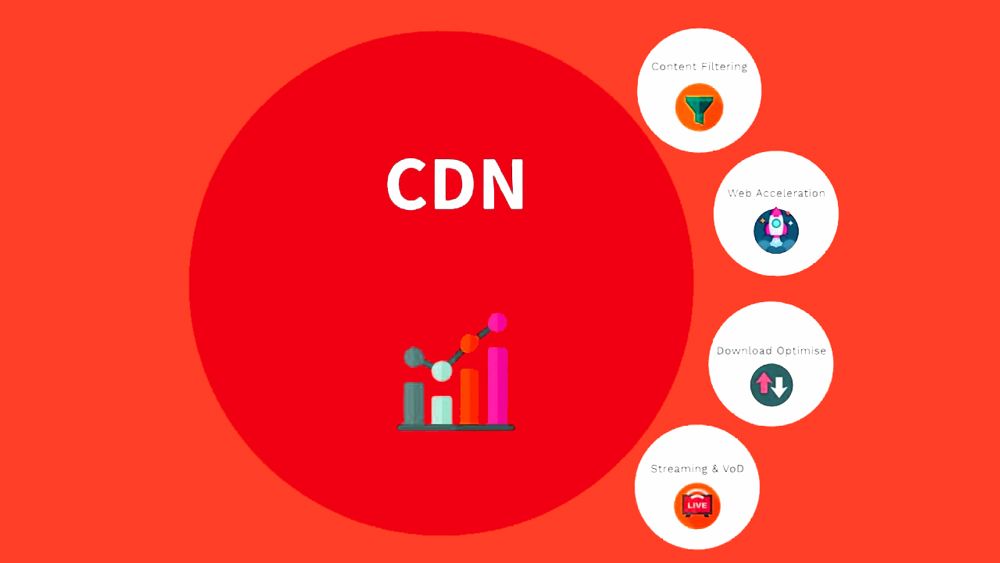In today’s digital world, optimizing user experience (UX) on a website is crucial for attracting and retaining customers. One of the most important technologies that can help achieve this goal is the Content Delivery Network (CDN). But what exactly is a CDN, and how can it optimize user experience on your website? In this article, we will dive deep into the fundamentals of a CDN, how it works, and effective strategies for leveraging this technology to improve speed and overall user experience.
1. What is a CDN?
CDN (Content Delivery Network) is a system of distributed servers strategically placed across various geographic locations. The primary purpose of a CDN is to deliver content, such as images, videos, static files, and dynamic web data, quickly and efficiently to users, minimizing latency when accessing a website.
The network works by caching static content from a website and storing it on multiple servers (called CDN nodes) worldwide. When a user accesses the site, the system automatically routes the request to the nearest server, helping reduce load times and improving accessibility.
2. Benefits of a CDN for Optimizing User Experience
Utilizing a CDN offers numerous advantages for users and website owners alike. Here are some key benefits that can significantly improve user experience:
2.1 Faster Load Times
One of the most critical factors influencing user experience is page load speed. If your website loads slowly, users may get frustrated and leave immediately. A CDN improves load time by storing cached copies of static files closer to users, reducing the distance data must travel from the origin server. This results in faster content delivery and a smoother browsing experience.
2.2 Reduced Latency and Lower Bounce Rate
Latency refers to the time taken for a user’s request to reach the server and receive a response. A CDN reduces latency by delivering content from servers that are geographically closer to the user, which helps reduce delays and improve access speed. With lower latency, users are more likely to stay on the site and engage with the content, reducing bounce rates, which is a key factor in SEO.

2.3 Improved Scalability
As marketing campaigns, events, or websites experience higher traffic volumes, handling increased load becomes essential. A CDN effectively scales by distributing the traffic load across multiple servers, ensuring a stable performance even during traffic spikes. This capability ensures that your site can handle sudden surges in demand without compromising speed or stability.
2.4 Enhanced Security
A CDN not only improves speed but also enhances website security. Many CDN providers include security features like DDoS protection, web application firewalls (WAF), and SSL/TLS encryption. These protections safeguard your website and user data from cyber threats, creating a secure environment for visitors and boosting trust.
2.5 Mobile Optimization
With the increasing number of mobile users, the speed at which pages load on mobile devices has become even more crucial. A CDN optimizes the mobile user experience by reducing load times and delivering content faster, even with slower mobile networks. This contributes to a better user experience, especially for users on the go, and helps improve mobile conversion rates.
3. How Does a CDN Work and Its Impact on User Experience?
A CDN operates through a network of distributed servers known as edge servers. These servers store copies of static content from the website, including images, videos, JavaScript files, and CSS files. When a user accesses the website, the system determines the user’s geographic location and directs the request to the server closest to them, rather than pulling content from the origin server.
Example: If a user in Vietnam accesses a website hosted in the United States, the request is routed to a nearby server, such as one in Singapore or Japan, minimizing the time it takes for the content to load. This reduces the time taken for data to travel long distances, improving the website’s load time.

4. How to Optimize User Experience Using a CDN
To maximize the benefits of a CDN for improving user experience, here are some strategies and best practices you can implement:
4.1 Choose the Right CDN Provider
There are many CDN providers in the market, including industry giants like Cloudflare, Amazon CloudFront, Akamai, KeyCDN, and Fastly. When selecting a provider, consider factors such as server coverage, security features, scalability, and support services.
- Cloudflare: One of the most popular providers, Cloudflare offers strong security features like DDoS protection, web application firewalls, and SSL/TLS encryption. It also supports smart routing, which optimizes the path data travels for the best user experience.
- Amazon CloudFront: With its extensive server network worldwide, CloudFront is ideal for websites with high traffic volumes and demanding content delivery needs.
4.2 Optimize Static Content
To reduce the load on the origin server and speed up content delivery, it’s crucial to optimize static files such as images, videos, and JavaScript/CSS files before caching them on the network. Some ways to optimize these files include:
- Image Compression: Use tools like TinyPNG to compress images without sacrificing quality.
- Minify JavaScript and CSS: Use tools like UglifyJS and CSSNano to remove unnecessary whitespace and code, reducing file size.
- Use Efficient File Formats: Convert images to WebP format and videos to MP4 for more efficient file storage.
4.3 Configure Proper Caching
Caching is a vital aspect of improving website performance. A CDN enables you to configure caching rules to store static files and serve them quickly to users. Set Time to Live (TTL) for cached content to ensure that files are not unnecessarily reloaded from the origin server each time a user accesses the site.
4.4 Leverage HTTP/2
Many CDN services today support HTTP/2, a newer protocol that enhances speed by reducing the number of connections required and using techniques like multiplexing to send multiple requests through a single connection. Ensure your website supports HTTP/2 for faster content delivery and a better overall user experience.
4.5 Monitor and Analyze Performance
To maintain optimal performance, continuously monitor and analyze key metrics such as page load time, latency, and traffic volume. Many CDN providers offer built-in analytics tools that allow you to track the performance of your content delivery network, detect issues early, and make necessary adjustments to improve user experience.
5. Conclusion
Using a Content Delivery Network is one of the most effective ways to optimize user experience on your website. Not only does it improve load times, reduce latency, and enhance scalability, but it also boosts security and mobile performance. By choosing the right provider, optimizing your content, configuring caching, and utilizing modern technologies like HTTP/2, you can significantly improve your website’s speed and keep users engaged.
If you want your website to perform better, it’s time to consider implementing a CDN. With its ability to deliver faster, more secure, and reliable browsing experiences, a well-optimized content delivery network will undoubtedly benefit your website and keep your users coming back for more.
* Contact us:
- Email: dc@dcx.com.vn
- Phone: 0333361599
- Facebook: https://www.facebook.com/DCX.Tech.Solutions/
